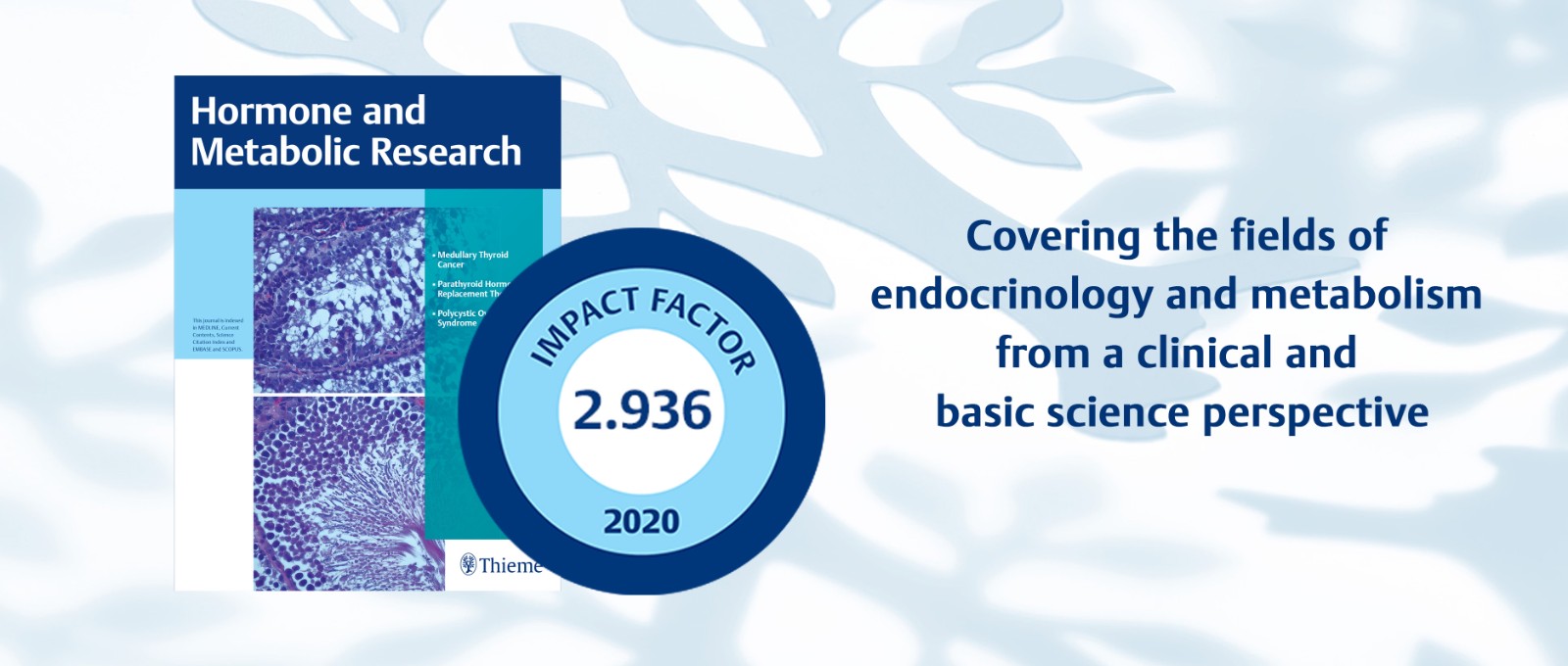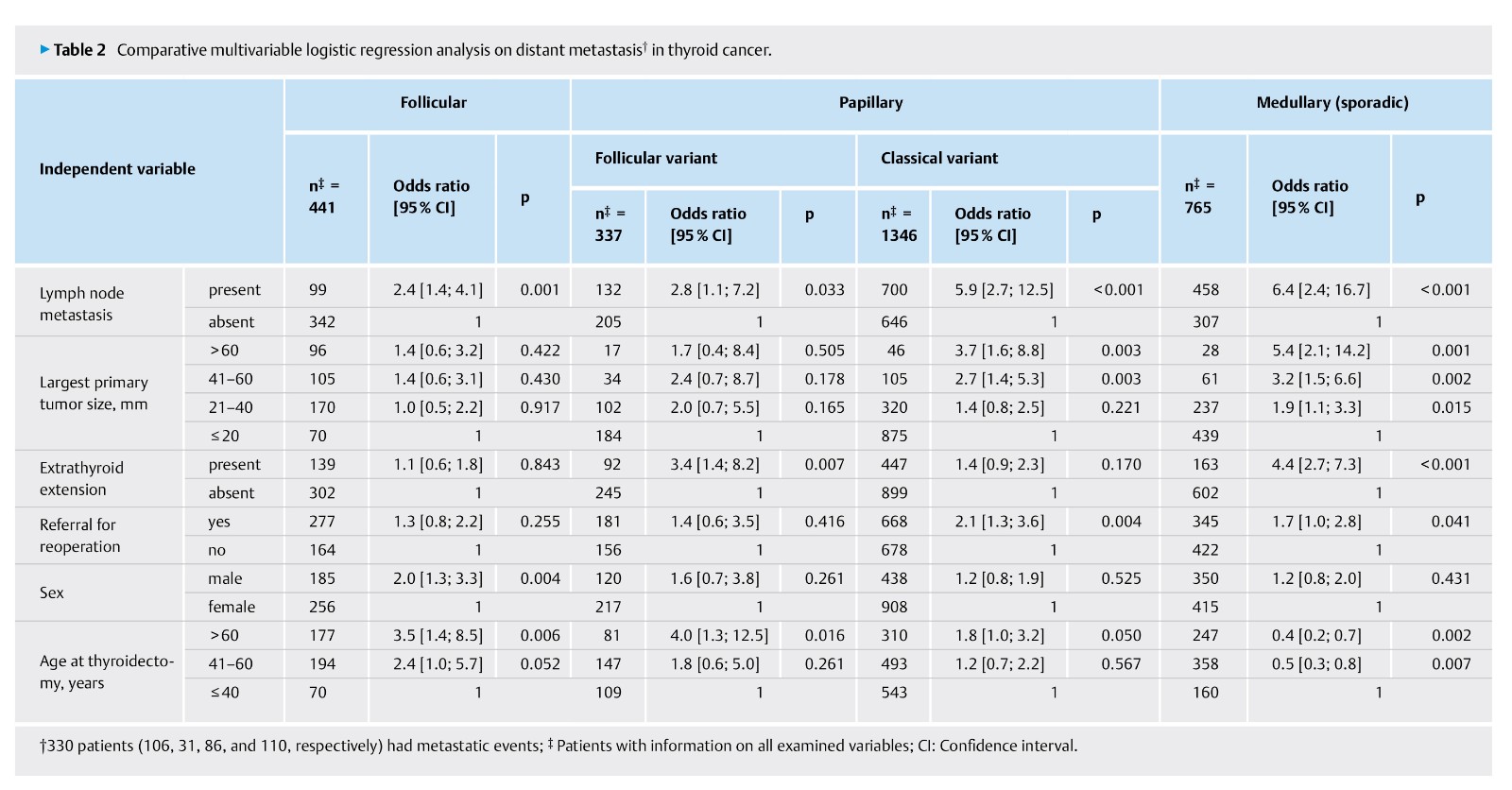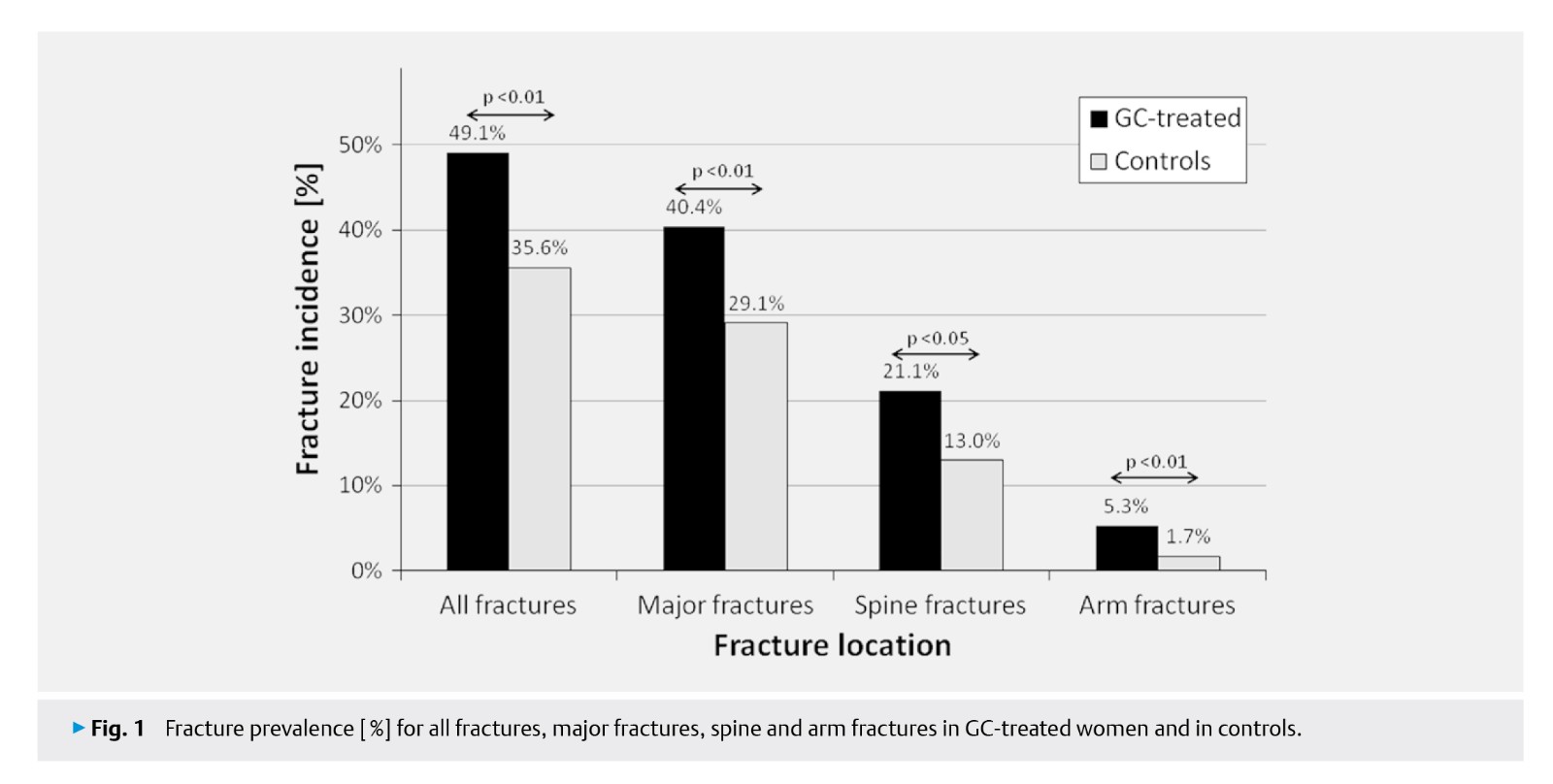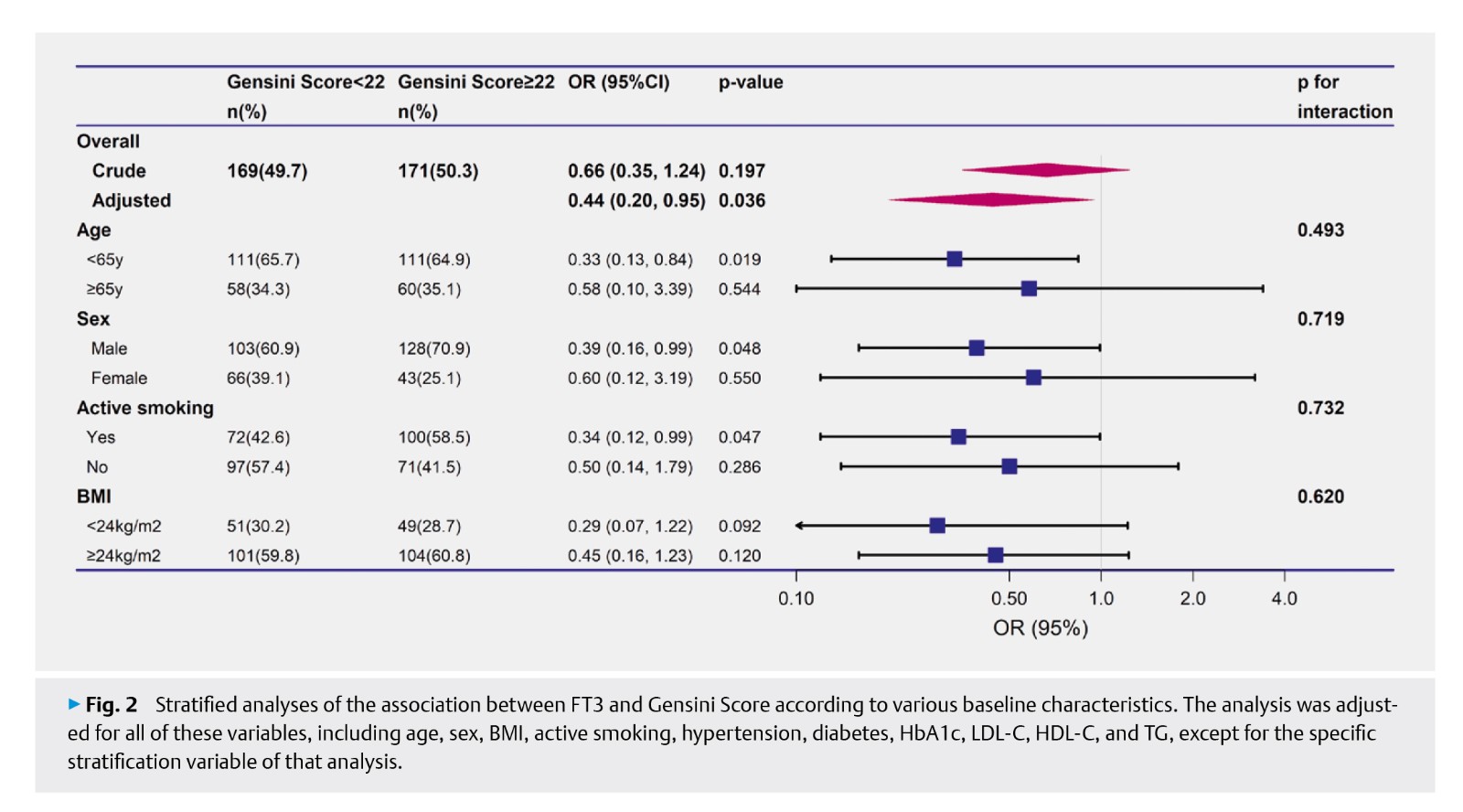

内分泌学期刊Hormone and Metabolic Research新年第一期现已上线。主编向您推荐本期三篇精选论文,欢迎免费阅读。
Issue 01 · Volume 54 · January 2022
Endocrine Care
Risk Patterns of Distant Metastases in Follicular, Papillary and Medullary Thyroid Cancer
Machens A et al.

This study of 542 patients with follicular thyroid cancer, 366 patients with the follicular variant and 1452 patients with the classical variant of papillary thyroid cancer, and 819 patients with sporadic medullary thyroid cancer operated at a tertiary referral center aimed to determine risk patterns of distant metastasis for each tumor entity, which are ill-defined. On multivariable logistic regression analyses, lymph node metastasis consistently emerged as an independent risk factor of distant metastasis, yielding odds ratios (ORs) of 2.4 and 2.8 for follicular thyroid cancer and the follicular variant of papillary thyroid cancer, and ORs of 5.9 and 6.4 for the classical variant of papillary thyroid cancer and sporadic medullary thyroid cancer. Another independent risk factor consistently associated with distant metastasis, most strongly in follicular thyroid cancer and the follicular variant of papillary thyroid cancer (OR 3.5 and 4.0), was patient age >60 years. Altogether, 2 distinct risk patterns of distant metastasis were identified, which were modulated by other cancer type-dependent risk factors: one with lymph node metastasis as leading component (classical variant of papillary thyroid cancer and sporadic medullary thyroid cancer), and another one with age as leading component (follicular thyroid cancer and the follicular variant of papillary thyroid cancer). Distant metastasis was exceptional in node-negative patients with sporadic medullary thyroid cancer (1.7%) and the classical variant of papillary thyroid cancer (1.4%), and infrequent in node-negative patients with the follicular variant of papillary thyroid cancer (4.4%). These findings delineate windows of opportunity for early surgical intervention before distant metastasis has occurred.
Endocrine Care
Pluskiewicz W et al.

The aim of the study was to establish the influence of glucocorticoids (GC) on fracture risk, probability, and prevalence. A set of 1548 postmenopausal women were divided into study group – treated with GC (n=114, age 66.48±7.6 years) and controls (n=1434, age 66.46±6.83 years). Data on clinical risk factors for osteoporosis and fractures were collected. Hip bone densitometry was performed using a device Prodigy (GE, USA). Fracture probability was established by FRAX, and fracture risk by Garvan algorithm and POL-RISK. Fracture risk and fracture probability were significantly greater for GC-treated women in comparison to controls. In the study group, there were 24, 3, 24, and 6 fractures noted at spine, hip, forearm, and arm, respectively. The respective numbers of fractures reported in controls at those skeletal sites were: 186, 23, 240, and 25. The use of GCs increased significantly prevalence of all major, spine and arm fractures. Also the number of all fractures was affected by GC use. Following factors significantly increased fracture probability: age (OR 1.04 per each year; 95% CI: 1.03–1.06), GC use (OR 1.54; 95% CI: 1.03–2.31), falls (OR 2.09; 95% CI: 1.60–2.73), and FN T-score (OR 0.62 per each unit; 95% CI: 0.54–0.71). In conclusion, in patients treated with GCs the fracture risk, probability, and prevalence were increased. This effect was evident regardless of whether GC therapy is included in the algorithm as a risk factor (FRAX, POL-RISK) or not taken into consideration (Garvan nomogram).
Endocrine Care
The Association of Thyroid Hormones with Coronary Atherosclerotic Severity in Euthyroid Patients
Na Yu, Linjie Wang, Yong Zeng, Yuxing Zhao, Shi Chen, Hui Pan, Fengying Gong, Huijuan Zhu

The aim of the work was to explore the correlation between thyroid hormones and coronary atherosclerotic severity. This cross-sectional study included 340 euthyroid patients who underwent diagnostic coronary artery angiography (CAG). Gensini Score (GS) was applied to assess the severity of coronary atherosclerosis. Thyroid hormones and routine biochemical parameters were measured. The associations between thyroid hormones and coronary atherosclerosis severity were analyzed. Thyroid hormones levels or parameters were taken as both continuous variables and tertiles into analysis, and the lowest tertile was usually used as the reference (OR=1) for medium and highest tertiles. Free triiodothyronine (FT3) level was associated with GS≥22 (Median GS) in Model I adjusted for age and sex [Continuous: OR=0.46, 95% CI (0.23, 0.92), p=0.029; Tertile 3: OR=0.54, 95% CI (0.30, 0.97), p=0.038], and Model II adjusted for all known risk factors of coronary artery disease (CAD) [Continuous: OR=0.44, 95% CI (0.20, 0.95), p=0.036; Tertile 3: OR=0.49, 95% CI (0.25, 0.96), p=0.039]. Subjects with highest tertile of FT3 to free thyroxine (FT4) ratio (FT3/FT4 ratio) appeared to have the remarkably decreased risk of CAD in both Non-adjusted Model [OR=0.49, 95% CI (0.24, 0.98), p=0.044] and Model I [OR=0.45, 95% CI (0.22, 0.93), p=0.031]. Higher FT3 level within normal range was independently and negatively associated with severity of coronary atherosclerosis. Besides, FT3/FT4 ratio was remarkably correlated with the prevalence of CAD in euthyroid population.
